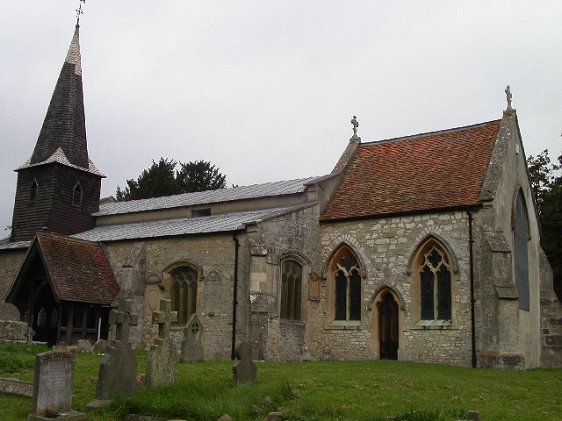 All Saints' Church, Didcot: Source: https://commons.wikimedia.org/wiki/File:All_Saints%27_church,_Didcot_-_geograph.org.uk_-_64064.jpg
All Saints' Church, Didcot: Source: https://commons.wikimedia.org/wiki/File:All_Saints%27_church,_Didcot_-_geograph.org.uk_-_64064.jpgAuthor: Dennis Jackson

Didcot is a town in South Oxfordshire, England. Until the change in county boundaries in 1974, it was part of Berkshire. The town is today home to some 24,000 people (2012 estimate).
People have lived in and around the Didcot area as early as the Iron Age. The ancient settlement occupyies a ridge surrounded by marshland. The marshes were drained by the Romans, who built ditches.
The earliest mention of present-day Didcot was in the 13th century, when it was documented as Dudcotte. It was then just a small village in Berkshire with a population of just around a hundred people. The village centered on present-day Lydalls Road. The All Saints' Church of Didcot dates from this period.
As with many of the towns and villages in England, Didcot prospered during the Industrial Revolution of the 19th century. This came to pass with the First World War, the Great Depression and the Second World War. Didcot became a major power supplier when the Didcot Power Stations went into operations in 1968. The power stations were often described in unflattering and sarcastic ways, as the "third worst eyesore in Britain" and as the "Cathedral of the Vale of White Horse".
 Cooling towers of Didcot Power Station: Source: https://commons.wikimedia.org/wiki/File:All_six_going_-_geograph.org.uk_-_1164276.jpg
Cooling towers of Didcot Power Station: Source: https://commons.wikimedia.org/wiki/File:All_six_going_-_geograph.org.uk_-_1164276.jpgAuthor: Bill Nicholls

Visiting Didcot
From London, take the M4 motorway heading west till Junction 13 at Chieveley, then head north on the A34 road until you reach Didcot.Places of Interest in Didcot
- All Saints' Church, Didcot: Anglican parish church that dates back to the 11th century, predating the earliest mention of Didcot.
- Didcot Railway Centre: Center celebrating trains and railways. It occupies the Didcot Motive Power Depot, and holds regular evens to educate the public on railcars.
 Latest updates on Penang Travel Tips
Latest updates on Penang Travel Tips

Copyright © 2003-2025 Timothy Tye. All Rights Reserved.

 Go Back
Go Back